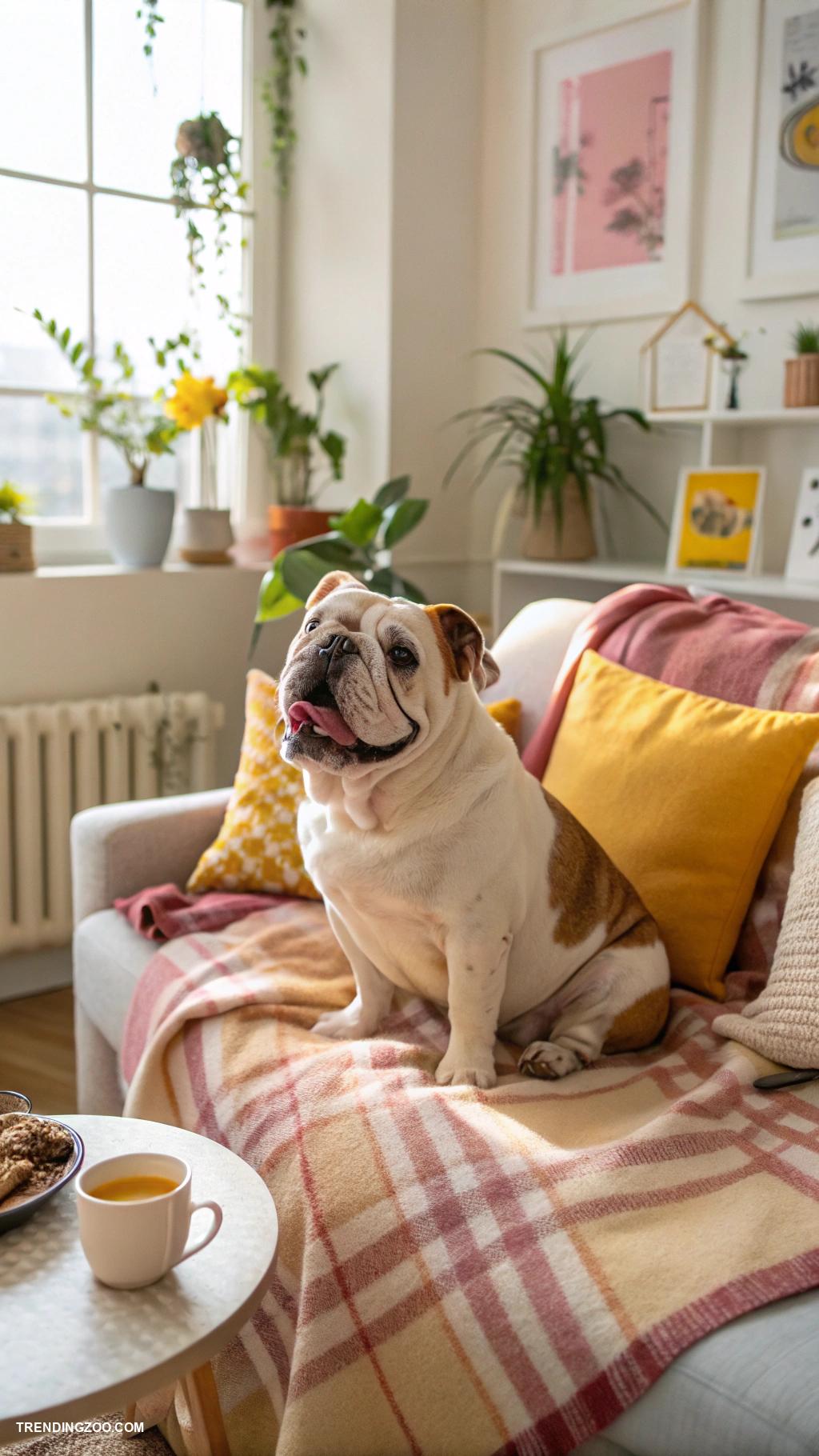Bulldogs – those adorable, wrinkly-faced, and snorty little bundles of joy have captured the hearts of many pet owners around the world. Originating from England in the 13th century, this sturdy breed was initially bred for blood sports, but their gentle nature and affectionate personalities soon won over the hearts of many.
Today, bulldogs are one of the most popular breeds in the world, and it’s easy to see why – their playful, laid-back demeanor, combined with their unique appearance and loving nature, make them the perfect companion for families and singles alike.
But what makes bulldogs such great pets, and what do you need to know before bringing one home? In this article, we’ll explore bulldogs and share everything from their history and temperament to their health and care needs.
History and Origin of Bulldogs
The history of bulldogs dates back to ancient times, with evidence of a breed resembling modern bulldogs found in ancient Greece and Rome. The earliest known depiction of a bulldog-like breed is on an ancient Greek vase, dated around 500 BC. In Britain, bulldogs were bred for bloodsports such as bullbaiting, a brutal spectacle where a dog would be set upon a tethered bull and forced to grab and hold on to its nose.
The breed’s unique characteristics, including its compact size, muscular build, and short snout, were developed to enable it to grip and hold onto the bull’s nose, while its calm and gentle nature allowed it to cope with the physical demands of the sport.
The popularity of bullbaiting led to the development of the modern bulldog breed, with the first written records of a bulldog breed dating back to the 13th century. As the sport of bullbaiting was eventually outlawed in the 19th century, the bulldog’s popularity as a companion animal grew, and the breed was developed and refined to become the beloved and iconic pet we know today.
Physical Characteristics of Bulldogs
Bulldogs are a beloved breed known for their distinctive physical characteristics. They have a sturdy and compact build, with adults typically weighing between 40-55 pounds and standing between 10-14 inches tall at the shoulder. Their short, smooth coats come in a range of colors including fawn, brindle, white, and a combination of these, with or without white markings.
One of the most striking features of the bulldog is their face, which is characterized by a flat, wrinkled forehead, a short, pushed-in snout, and a distinctive “rose” or “puppy dog” eye shape. Their ears are small and rose-shaped, hanging down to the sides of their head. Their tail is short and set high on the back, often carried low when the dog is at rest.
Overall, the bulldog’s unique appearance is a result of their history as a breed developed for bullbaiting, a now-illegal blood sport in which dogs were set upon a tethered bull. Despite their rugged origins, bulldogs are often described as “gentle giants” due to their affectionate and adaptable nature.
Temperament and Behavior
When it comes to temperament and behavior, bulldogs are known for being affectionate, gentle, and adaptable companions. They are often described as having a “sweet” and “playful” nature, which makes them a joy to be around.
Bulldogs are generally calm and laid-back, making them a great fit for families with children or for individuals who live in apartments or have limited space. They are not high-energy dogs and do not require a lot of exercise, which makes them a great choice for people who do not have a lot of time to devote to physical activity.
Despite their laid-back nature, bulldogs can be stubborn at times and may require patience and consistency when training. They are also known to be protective of their families and can be wary of strangers, which makes them excellent watchdogs.
With proper socialization and training, bulldogs can thrive in a variety of living situations and make wonderful pets for people of all ages.
Health Considerations
When considering bringing a bulldog into your family, it’s essential to be aware of the breed’s unique health considerations.
Due to their flat face and brachycephalic skull structure, bulldogs are prone to respiratory issues such as brachycephalic syndrome, which can cause breathing difficulties, especially in hot or humid weather. They may also experience heatstroke, as their short snout and compact body make it challenging for them to regulate their body temperature.
Additionally, bulldogs are at risk for skin fold infections and allergies, which their wrinkled skin can exacerbate. Hip dysplasia and joint issues are also common in the breed, particularly as they age, making regular exercise and weight management crucial.
Furthermore, bulldogs are more susceptible to eye problems, such as cherry eye and entropion, which can lead to vision loss if left untreated. Regular veterinary check-ups and preventative care are vital to ensure your bulldog stays healthy and happy.
Grooming and Care Needs
When it comes to the grooming and care needs of bulldogs, it’s essential to understand that they require a unique approach due to their distinctive physical characteristics. Their wrinkled skin, flat face, and brachycephalic (short-nosed) skull structure make them prone to skin fold infections and respiratory issues if not properly cared for.
Daily cleaning of their wrinkles and facial folds is crucial to prevent moisture buildup and skin irritation. A damp cloth or cotton ball should be gently wiped over these areas, paying extra attention to the creases around the eyes, nose, and mouth.
Regular nail trimming, ear cleaning, and dental care are necessary to prevent common health issues. Bulldogs also require regular exercise, but it’s essential to keep in mind that they are not built for long-distance running or high-impact activities. Short, gentle walks and playtime are recommended to keep them happy and healthy.
Training and Socialization Tips
When it comes to training and socialization, bulldog puppies require a gentle and patient approach. One of the most important things to keep in mind is that bulldogs are a brachycephalic breed, meaning they can easily overheat and become exhausted, so it’s essential to keep training sessions short and sweet. Start with simple commands like “sit” and “stay” and reward your puppy with treats and praise when they obey.
Socialization is also crucial for bulldogs, as they can be prone to anxiety and aggression if not properly socialized. Expose your puppy to new people, places, and experiences from an early age, and be sure to introduce them to other animals in a controlled and safe environment.
It’s also important to teach your puppy basic manners, such as not jumping up or pulling on the leash, to help them become well-behaved and well-adjusted companions. With patience, consistency, and positive reinforcement, you can help your bulldog puppy develop into a happy and well-adjusted adult dog.
Popular Bulldog Variations
The bulldog, a beloved breed known for its distinctive physical appearance and affectionate personality, comes in a variety of popular variations that have captured the hearts of many dog aficionados.
One of the most well-known is the English Bulldog, also referred to as the British Bulldog, which is the original and most iconic breed. Characterized by its stout build, wrinkled face, and adorable underbite, the English Bulldog is a gentle giant that makes a loyal and loving companion.
Another popular variation is the French Bulldog, also known as the Bouledogue Français, which is a smaller and more agile breed with a unique “bat ear” appearance.
The American Bulldog, on the other hand, is a larger and more athletic breed that is often used for its strength and agility in dog sports.
The Pug, although not technically a bulldog, is often referred to as a “miniature bulldog” due to its similar physical characteristics and playful demeanor.
Finally, the Bull Terrier, with its distinctive egg-shaped head and athletic build, is another popular variation that is often mistaken for a bulldog due to its similar appearance.
Each of these variations has its own unique characteristics and traits, but they all share the common trait of being loving, loyal,









